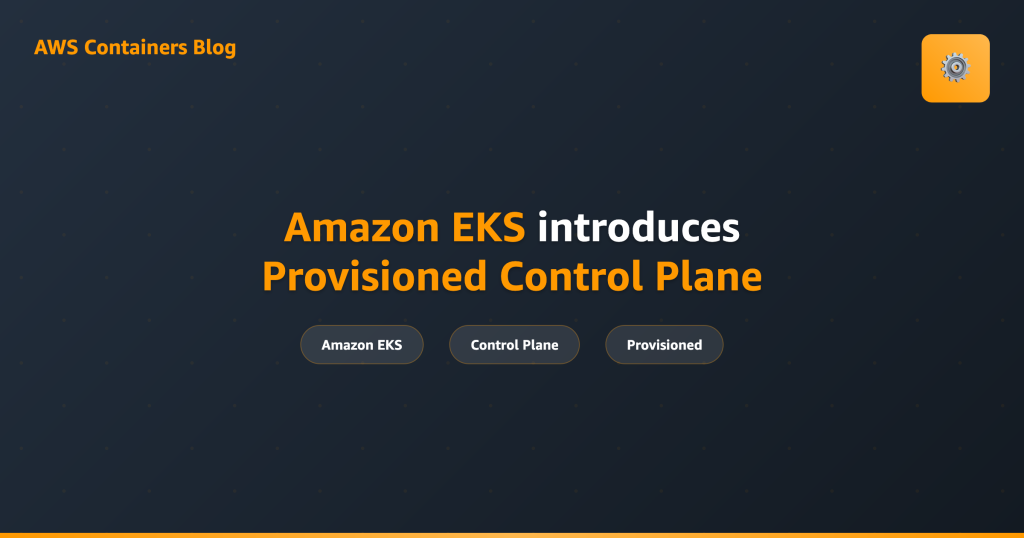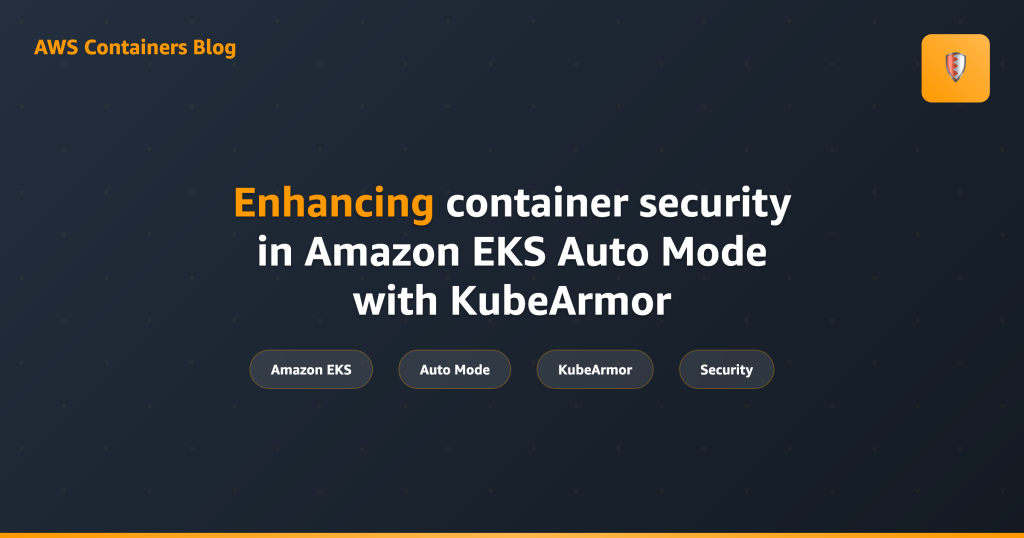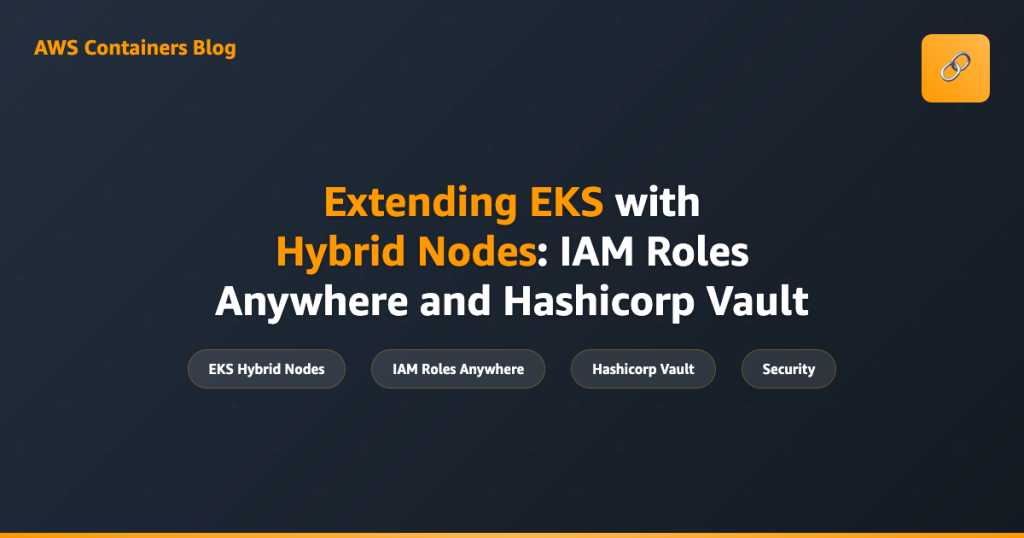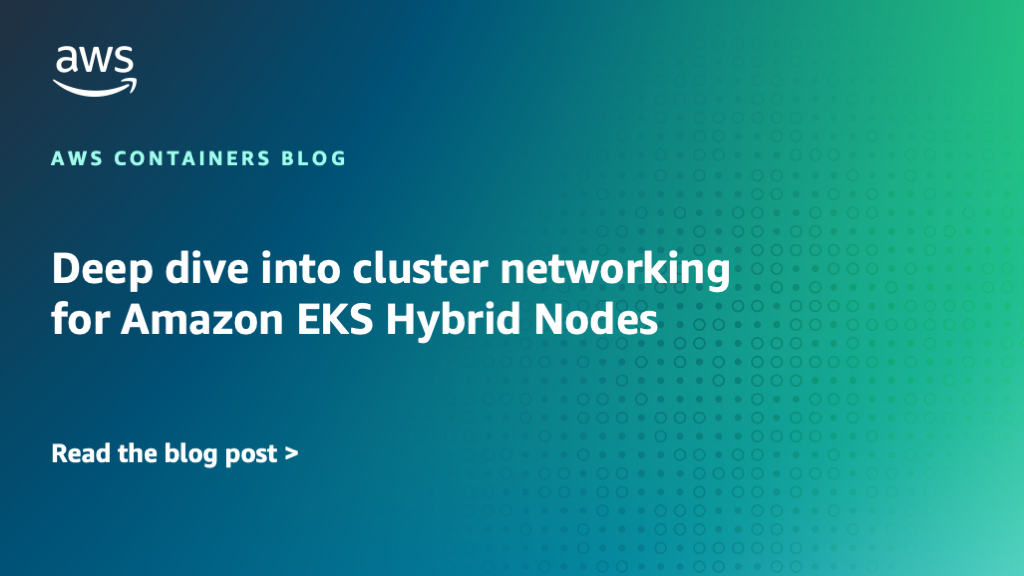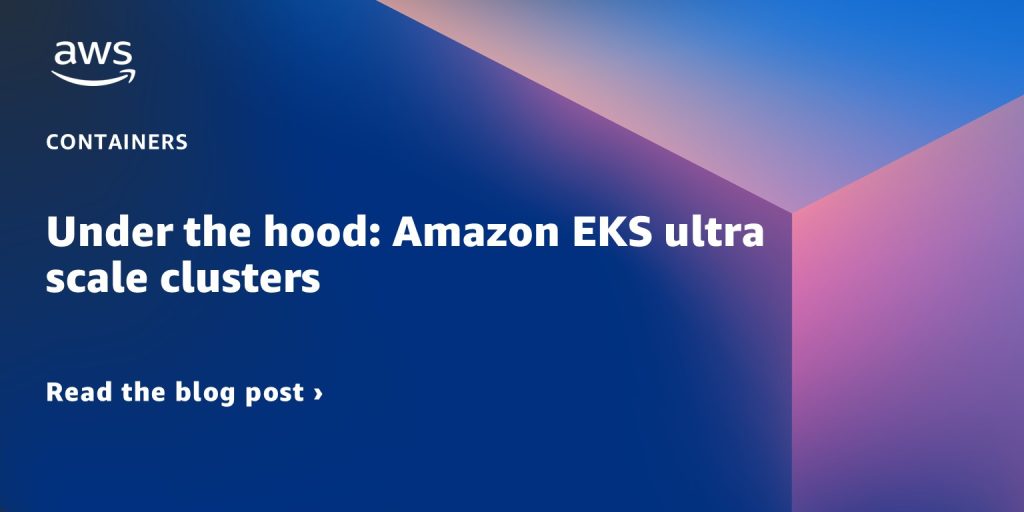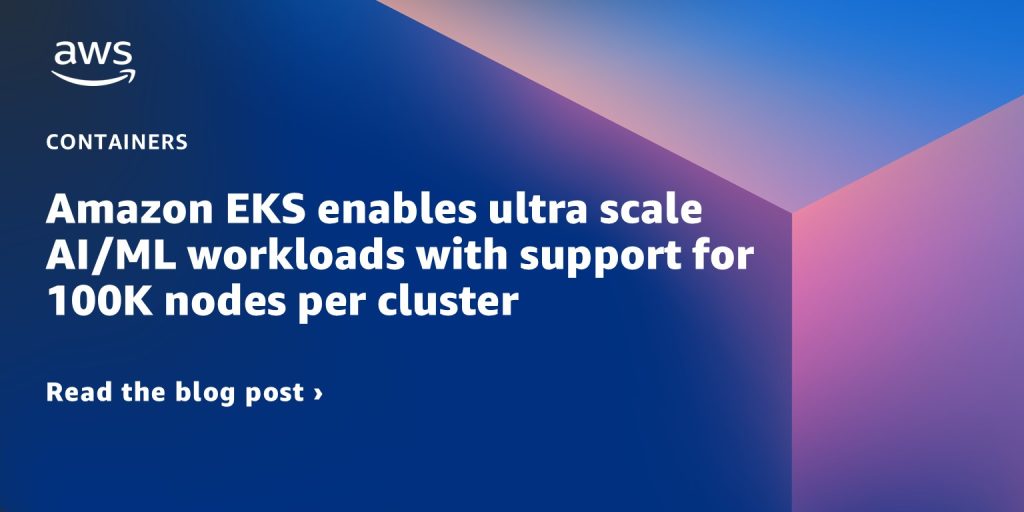Containers
Tag: Amazon EKS
Amazon EKS introduces Provisioned Control Plane
Amazon EKS introduces Provisioned Control Plane, a new capability that allows you to pre-allocate control plane capacity for predictable, high-performance Kubernetes operations at scale. In this post, we explore how this enhanced option complements the Standard Control Plane by offering multiple scaling tiers (XL, 2XL, 4XL) with well-defined performance characteristics for API request concurrency, pod scheduling rates, and cluster database size—enabling you to handle demanding workloads like ultra-scale AI training, high-performance computing, and mission-critical applications with confidence.
Enhancing container security in Amazon EKS Auto Mode with KubeArmor
In this post, we explore how KubeArmor, an open source container-aware security enforcement system, enhances the security posture of containerized workloads running on EKS Auto Mode clusters. Although EKS Auto Mode significantly streamlines cluster management by automating control plane and node operations, securing the workloads running within the cluster remains a critical user responsibility.
Extending EKS with Hybrid Nodes: IAM Roles Anywhere and HashiCorp Vault
In this post, we explore how to use AWS Identity and Access Management (IAM) Roles Anywhere, supported by HashiCorp Vault PKI, to facilitate joining EKS Hybrid Nodes to an Amazon EKS Cluster. This solution enables businesses to flexibly make use of compute resources outside of AWS by extending an Amazon Elastic Kubernetes Service (Amazon EKS) data plane beyond the AWS Cloud boundary, addressing use cases focused on data sovereignty, low latency communication, and regulatory compliance.
Deep dive into cluster networking for Amazon EKS Hybrid Nodes
In this post, we dive deep into cluster networking configurations for Amazon EKS Hybrid Nodes, exploring different Container Network Interface (CNI) options and load balancing solutions to meet various networking requirements. The post demonstrates how to implement BGP routing with Cilium CNI, static routing with Calico CNI, and set up both on-premises load balancing using MetalLB and external load balancing using AWS Load Balancer Controller.
Under the hood: Amazon EKS ultra scale clusters
This post was co-authored by Shyam Jeedigunta, Principal Engineer, Amazon EKS; Apoorva Kulkarni, Sr. Specialist Solutions Architect, Containers and Raghav Tripathi, Sr. Software Dev Manager, Amazon EKS. Today, Amazon Elastic Kubernetes Service (Amazon EKS) announced support for clusters with up to 100,000 nodes. With Amazon EC2’s new generation accelerated computing instance types, this translates to […]
Amazon EKS enables ultra scale AI/ML workloads with support for 100K nodes per cluster
We’re excited to announce that Amazon Elastic Kubernetes Service (Amazon EKS) now supports up to 100,000 worker nodes in a single cluster, enabling customers to scale up to 1.6 million AWS Trainium accelerators or 800K NVIDIA GPUs to train and run the largest AI/ML models. This capability empowers customers to pursue their most ambitious AI […]
Amazon EKS Pod Identity streamlines cross account access
This post was co-authored by Ashok Srirama, Principal Container Specialist SA and George John, Senior Product Manager EKS. Introduction Today, we’re excited to announce a significant enhancement to Amazon EKS Pod Identity –streamlined cross-account access for Kubernetes applications. This new feature simplifies the process of granting pods permission to access AWS resources in other accounts. […]
Deep Dive: Amazon EKS Dashboard for Visibility into Multi-Cluster Operations and Governance
This blog post was jointly authored by Carlos Santana, Sr. Solution Architect, Containers; Sriram Ranganathan, Sr. Product Manager, Kubernetes; Sabari Sawant, Product Marketing Manager, Kubernetes; and Frank Carta, Sr. GTM specialist, Containers. As organizations grow their Kubernetes infrastructure across AWS Regions and accounts, they face increasing challenges in maintaining oversight of their Kubernetes clusters. Without […]
Introducing AI on EKS: powering scalable AI workloads with Amazon EKS
This blog post was jointly authored by Vara Bonthu, Principal OSS Specialist Solutions Architect and Omri Shiv, Senior Open Source ML Engineer Introduction We’re excited to announce the launch of AI on EKS: a new open source initiative from Amazon Web Services (AWS) designed to help customers deploy, scale, and optimize artificial intelligence/machine learning (AI/ML) […]
Optimizing data lakes with Amazon S3 Tables and Apache Spark on Amazon EKS
This blog post was authored by Aritra Gupta (Senior Product Manager – S3), Vara Bonthu (Principal, Open Source Software Specialist Solutions Architect), Ratnopam Chakrabarti (Senior Solutions Architect – Containers & Open Source Software), and Manabu McCloskey (Senior Open Source Engineer). Introduction Managing business data has become increasingly challenging as companies collect more information than ever […]
